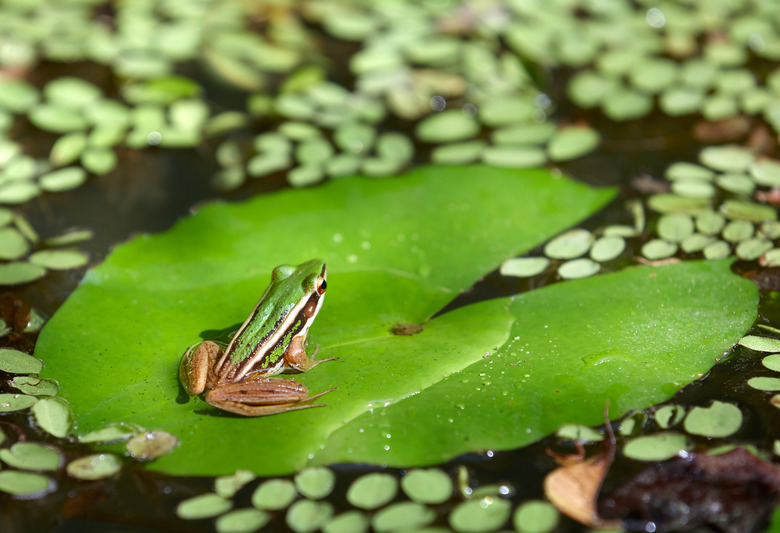Frog Habitat & Adaptations
There are more than 5,000 species of frogs throughout the world (what might those black tadpoles you found on your last walk turn into?), and the special features of a frog allow it to be successful living in both water and on land.
The Kidzone website explains that the word amphibian literally means "two lives." Frogs are not the only amphibians, but they may be the best known. Other amphibious creatures include toads, salamanders, newts, and caecilians or blindworms. All amphibians begin their life in water with gills and tails. As they mature, they develop lungs and legs for their life on land. These unique frog characteristics give them the ability to live in two environments. Because of this, there are specific frog adaptations that help them survive.
Ideal frog habitat
Ideal frog habitat
Zephyrus explains that frogs live in or near ponds or other freshwater sources. Frogs lay their eggs in clumps. As the eggs begin to hatch, the tadpoles (what baby frogs are called) attach to nearby grass or other stems within the water. External gills on their heads help the baby tadpoles filter air out of the water in which they are living. As they grow, the external gills drop away and their internal gills develop fully.
There are other differences between frogs and tadpoles, though. The tadpole has only a short tail for moving through the water. As the tadpole develops into a frog, the tail remains while the back legs develop. Then the tadpole develops front legs, and the tail begins to shorten and disappear.
Special features of a frog
Special features of a frog
As the frog characteristics fully develop, the tadpole characteristics disappear, and the frog is ready to start living life on land. Though they have legs and can breathe through their skin and lungs, they still need to be near and in water at times. The Toronto Zoo lists special features of a frog that allow it to adapt to both water and land habitats.
Frog adaptations such as a small waist, no neck and a broad, flat skull make his body streamlined for swimming. The frog's skin is thin, which allows for air to pass through, in effect allowing him to breathe through his skin. Powerful hind legs and feet allow the frog to jump long distances. Much like how the webbed feet of a duck helps to navigate water, a frog's webbed feet help him swim effectively.
Frog coloring and body characteristics
Frog coloring and body characteristics
With more than 5,000 species of frogs in the world, they are not all colored the same, and some are very bright. Freshwater frogs who live in or near pond habitats are generally green with darker spots. The coloring helps her blend in with a pond habitat. One unique frog adaptation is that a frog's eyes are positioned on top of her head. This allows the frog's body to be in the water while still giving her the ability to see over a wide area. The anatomy of her eyes and eyelids also allows the frog to see underwater.
Another frog characteristic that keeps water flowing over her body in a streamlined way is that her ears are flat discs. This also prevents water from getting into the ear canal as it does in humans.
A frog's mouth opens wide in a horizontal fashion. This allows a frog to eat large prey. Her tongue is long and sticky, which allows her to catch insects for food, even without having to move her body. One final frog adaptation is also an important reason why a frog's life cycle has to take place near water. A frog must lay her eggs in water. When she does, the eggs form a clump that is sticky. The eggs stick together and do not float away in the water. The gelatinous covering also protects the eggs.
